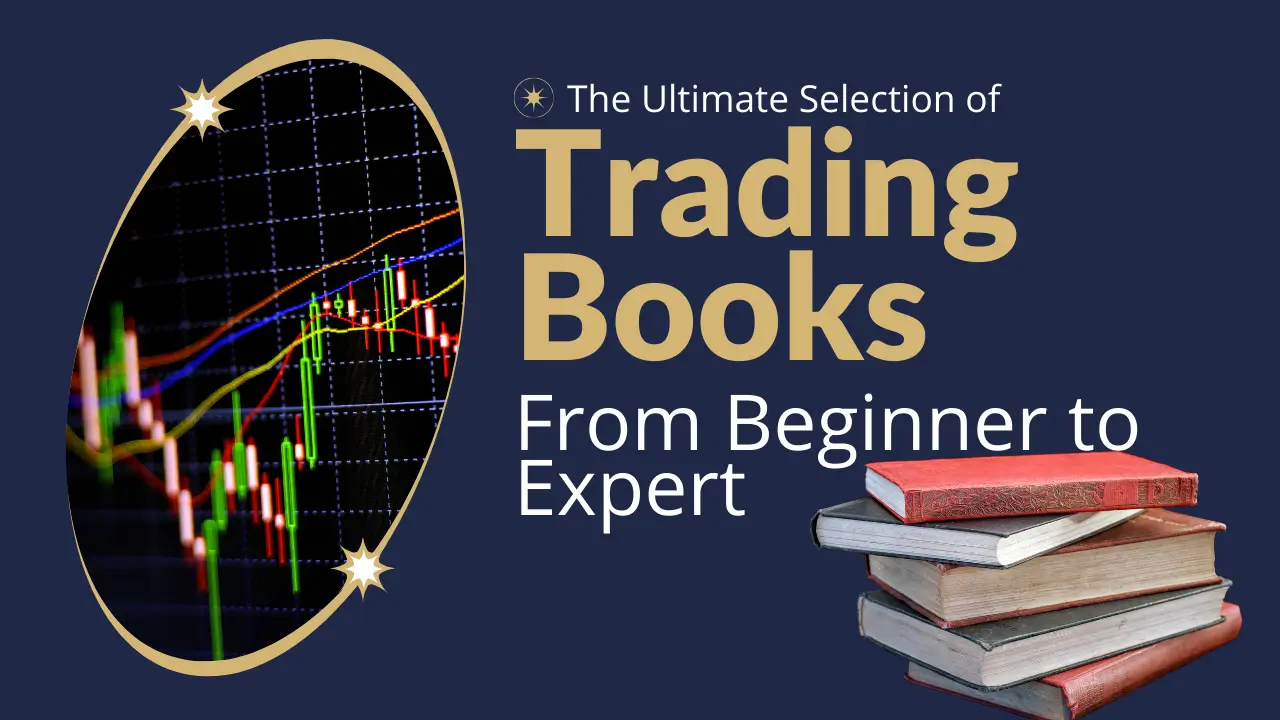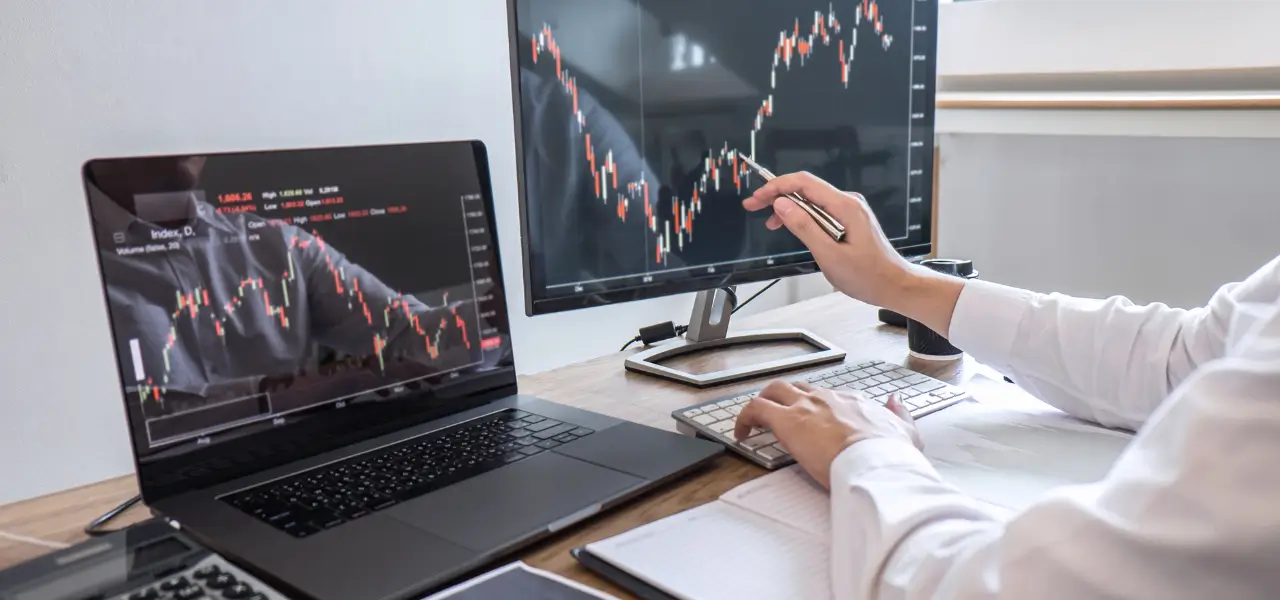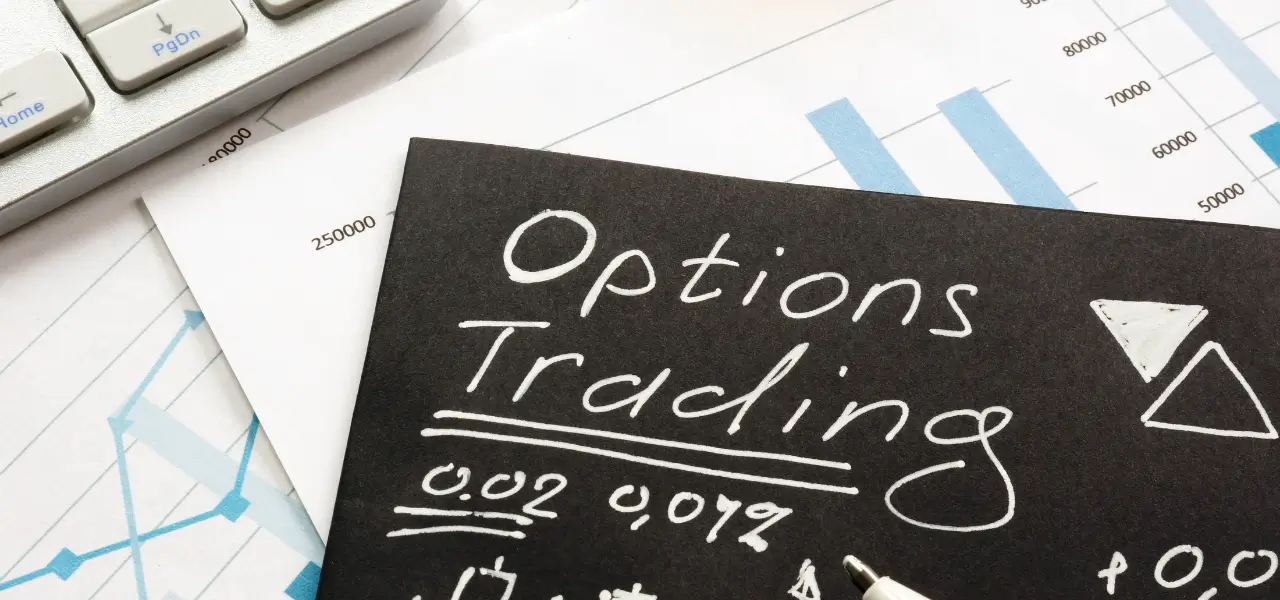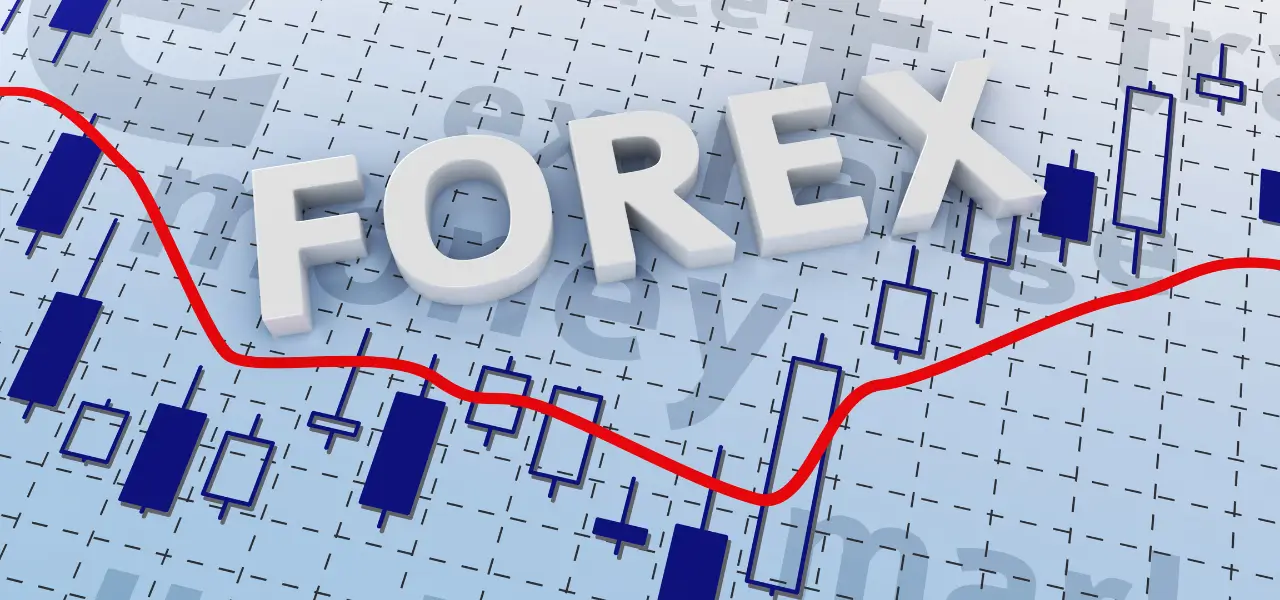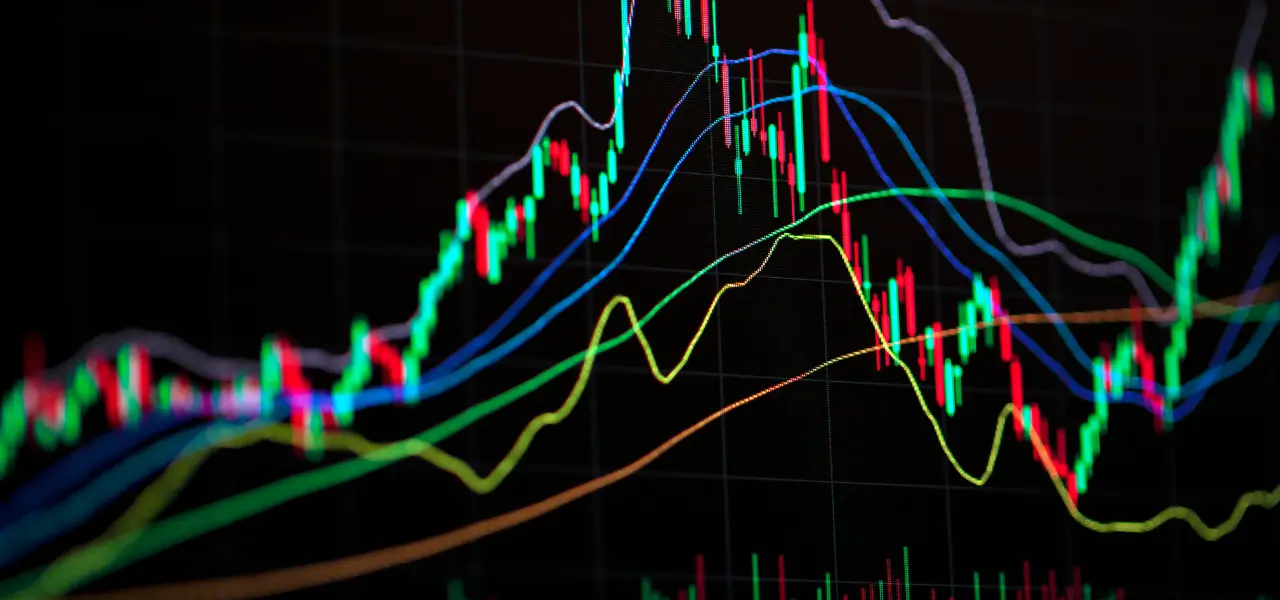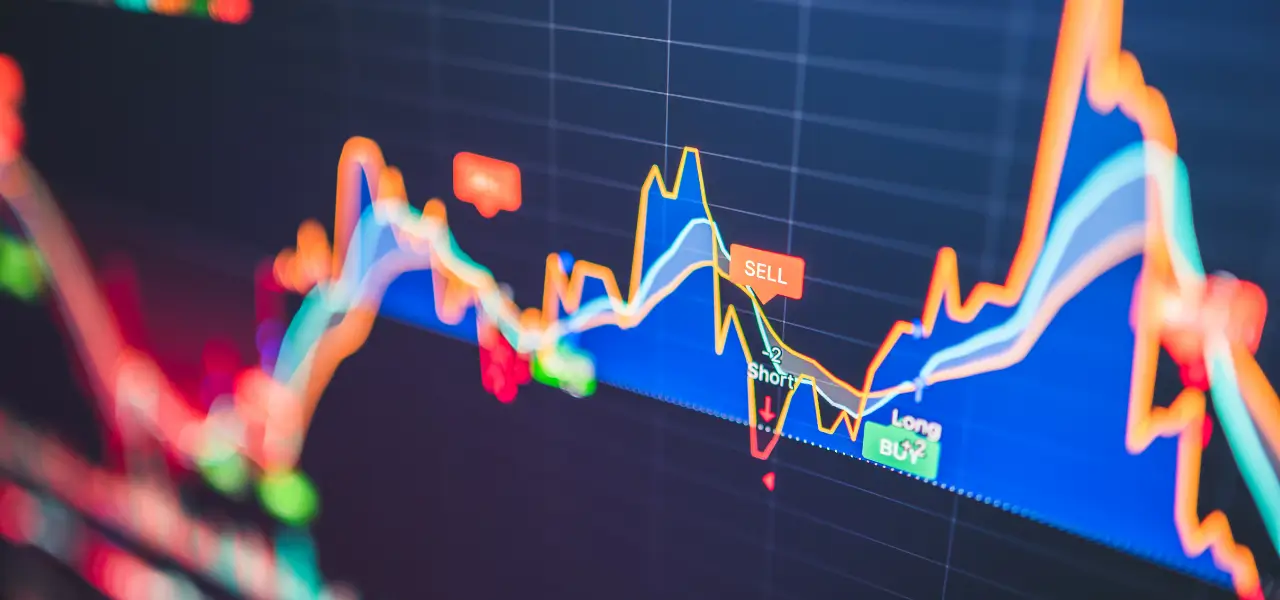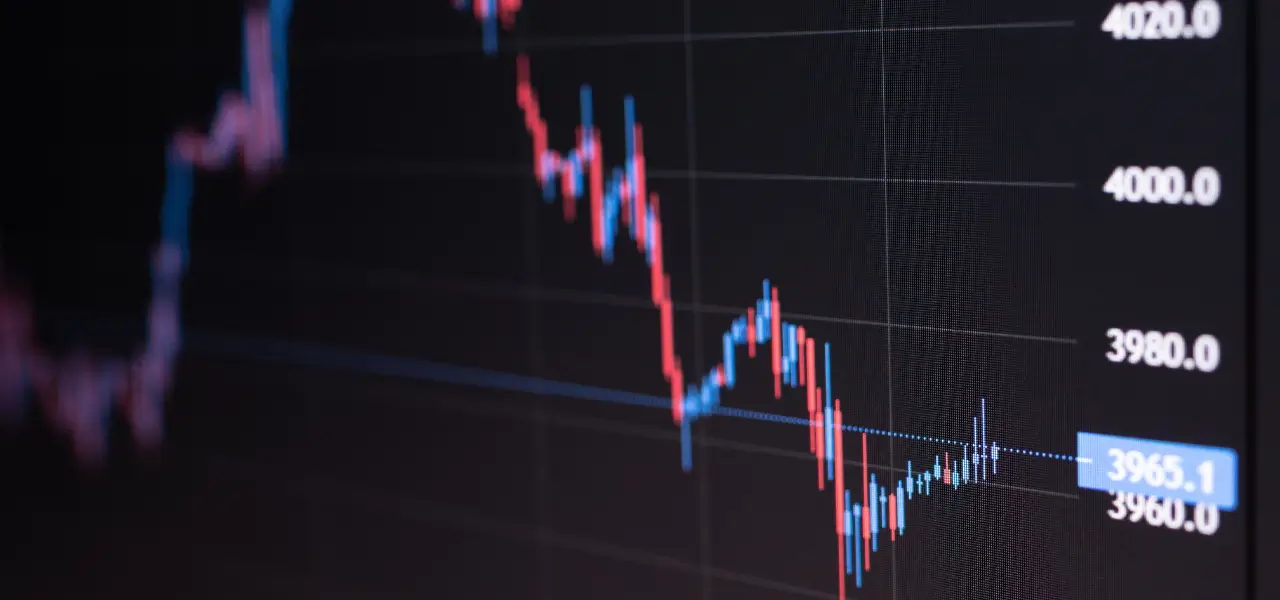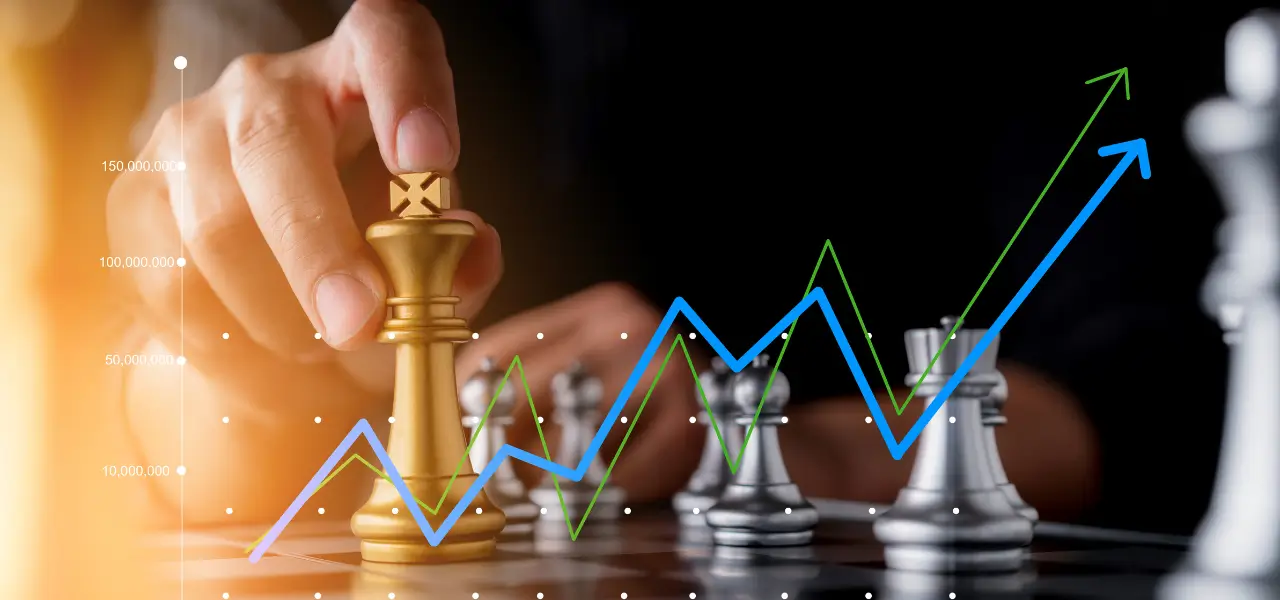Navigating the vast sea of trading books can be overwhelming. With thousands of titles claiming to hold the secrets to market success, how do you separate the wheat from the chaff? That’s exactly why we’ve created this comprehensive guide to the best trading books ever written.
What makes this guide different? Instead of a generic list, we’ve meticulously categorized trading books based on experience level, trading style, and market focus. This organization ensures you’ll find exactly what you need, when you need it, as you progress on your trading journey.
I) How to Transform Book Knowledge into Trading Success
Many traders collect dozens of books but struggle to convert that knowledge into profitable results. Before diving into specific book recommendations, let’s address discuss how to actually extract value from trading books. Here’s a step-by-step approach to maximize your learning and implementation:
- Read with purpose: Before opening any trading book, clearly define what specific problem you’re trying to solve or skill you’re trying to develop. Random reading without clear objectives leads to information overload.
- Take structured notes: Create a dedicated trading repository with separate sections for concepts (use google doc, notion or any other app of your choice), strategies, psychology, and risk management. As you read, document only actionable ideas you can actually implement, not theory.
- Create implementation checklists: For each strategy or technique you want to adopt, develop a specific checklist with entry criteria, exit rules, position sizing, and risk parameters. Vague understanding leads to inconsistent execution.
- Backtest before risking capital: Use historical data to test new concepts before applying them with real money. This validates whether the strategy actually works in the markets you trade.
- Practice in simulation first: Implement new strategies in a demo account for at least 20-30 trades to build confidence and work out execution issues before risking actual capital.
- Integrate gradually: Add only one new technique at a time to your existing methodology. Trying to implement multiple new approaches simultaneously makes it impossible to determine what’s working and what isn’t.
- Track results objectively: Document every trade taken based on concepts from specific books, measuring not just P&L but also adherence to the strategy rules. This shows whether the problem is the strategy or your implementation.
- Review and refine regularly: Schedule weekly reviews of your trading performance against the concepts you’re implementing. Identify areas where you’re deviating from the strategy or where the strategy itself needs adjustment.
- Create a knowledge hierarchy: Organize books by fundamental importance. Risk management and psychology books should take priority over specific strategies, as these principles apply regardless of your trading approach.
- Focus on timeless principles: Pay special attention to concepts that have remained valid across decades and different market conditions. Tactical techniques come and go, but principles of market behavior endure.
Remember that application beats accumulation. One book fully implemented will transform your trading more than fifty books partially read. Now, let’s explore the best trading books by category so you can build your knowledge systematically.
II) Best Trading Books by Category: Find Your Perfect Reads
Below you’ll find carefully curated recommendations organized into categories that match different trading needs. This structure allows you to quickly locate books that align with your current focus, whether that’s building fundamental knowledge, mastering a specific market, or developing the psychological edge needed for trading success.
Each book has been selected based on its educational value, real life application, and standing within the trading community. The categories range from beginner-friendly introductions to specialized texts on advanced strategies and market analysis.
Best Trading Books for Beginners
Starting your trading journey can feel intimidating. The books in this section provide a strong foundation without overwhelming you with complex terminology or advanced concepts. They offer clear explanations, practical advice, and a roadmap for developing your trading knowledge systematically.
If you’re new to trading, these books will help you understand market mechanics, basic terminology, and the mindset required for success. They focus on accessibility and concrete application rather than theoretical complexity.
Understanding Financial Markets: The Basics
Before placing your first trade, it’s essential to understand how financial markets operate. These books explain the fundamental workings of financial markets, various participants (brokers, exchanges, institutional investors, retail traders), and the different ways you can participate.
They demystify core concepts and terminology that will form the foundation of your trading knowledge. Understanding market structure and dynamics is crucial before advancing to specific strategies.
“A Beginner’s Guide to the Stock Market” by Matthew Kratter
This concise guide provides clear explanations of stock market fundamentals without overwhelming detail. Kratter cuts through the complexity to deliver essential concepts that new traders need to understand. An excellent starting point for beginners seeking a quick but thorough introduction to how stocks work.
“The Intelligent Investor” by Benjamin Graham
While focused primarily on long-term investing rather than active trading, this classic text provides invaluable background on market valuation and the concept of margin of safety. Warren Buffett calls it “the best book on investing ever written,” and its principles help traders understand the fundamental value perspective that influences market movements.
“How the Stock Market Works” by Michael Becket
This comprehensive introduction explains the mechanics of stock markets, including how shares are bought and sold, what affects prices, and how to interpret financial news. Becket provides a clear roadmap for understanding market structure and participant behavior in accessible language.
Introduction to Trading Styles
Trading isn’t one-size-fits-all. Different trading styles suit different personalities, schedules, and risk tolerances. These books provide a broad overview of various approaches (day trading, swing trading, position trading, and long-term investing).
They help beginners understand the different timeframes, risk profiles, and capital requirements associated with each style, allowing you to identify which approach might work best for your situation and temperament.
“Trading for a Living” by Alexander Elder
Dr. Elder presents a comprehensive overview of different trading approaches, giving beginners a taste of various styles. The book combines psychological preparation, risk management, and technical analysis in a well-rounded introduction to trading as both a skill and a business.
“Start Day Trading Now” by Michael Sincere
This book introduces the world of day trading with a focus on what beginners actually need to know. Sincere covers the basics of different trading styles with emphasis on short-term approaches, equipment needs, and realistic expectations about the learning curve and potential returns.
Introduction to Basic Trading Strategies
Once you understand market mechanics and have identified your preferred trading style, you need concrete strategies to begin with. These books introduce simple, foundational trading strategies, often based on basic technical analysis or trend following.
They avoid complex indicators and focus on core principles that beginner traders can implement right away. These strategies provide a starting point for developing your own approach to the markets.
“How to Make Money in Stocks” by William O’Neil
O’Neil introduces his CANSLIM methodology, a relatively straightforward approach that combines fundamental and technical analysis. This systematic strategy helps beginners identify stocks with potential for significant growth and provides specific entry and exit criteria.
“Technical Analysis for Dummies” by Barbara Rockefeller
This accessible introduction to technical analysis breaks down chart patterns, indicators, and basic principles without assuming prior knowledge. Rockefeller explains how to read charts, identify trends, and recognize common patterns in a way that’s perfect for beginners.
First Steps in Trading Risk Management
Before diving deep into strategies, it’s crucial to understand how to protect your capital. These books introduce the essential concept of risk management, emphasizing that preserving your trading capital is the first priority.
They explain basic risk control methods like position sizing and stop-loss orders that every trader should master before focusing on complex strategies. Without proper risk management, even the best trading strategy will eventually fail.
“The New Trading for a Living” by Alexander Elder
While covering multiple topics, Elder places strong emphasis on risk management that’s accessible to beginners. The book details detailed position sizing methods, stop placement techniques, and the psychology of managing risk—essential knowledge for trading longevity.
“Trade Your Way to Financial Freedom” by Van K. Tharp
Tharp focuses on the critical aspects of position sizing and risk control that many beginners overlook. The book explains how proper risk management is more important than entry signals and provides frameworks for determining how much to risk on each trade.
Best Books on Trading Psychology
Many traders discover that mastering market analysis is only half the battle. The real challenge often lies in managing emotions and cognitive biases that can sabotage even the best trading plans. These books help traders understand and control their psychological responses to market events.
They emphasize developing the mental discipline needed for consistent profitability and explain how to overcome common psychological traps that affect decision-making under the uncertainty and pressure of trading.
“Trading in the Zone” by Mark Douglas
Considered the bible of trading psychology, this book focuses on developing a probabilistic mindset. Douglas explains why emotional reactions and cognitive biases lead to poor trading decisions and provides actionable methods for achieving a state of objectivity he calls “thinking in probabilities.”
“The Daily Trading Coach” by Brett Steenbarger
Steenbarger provides 101 lessons for managing trading stress and improving performance. The book offers precise techniques and exercises that traders can use to coach themselves through psychological challenges, with a focus on maintaining discipline and emotional control during market hours.
“Trading Psychology 2.0” by Brett Steenbarger
This deeper exploration of psychological patterns examines how personality traits influence trading decisions. Steenbarger connects psychological research to real trading applications, helping traders identify their strengths and weaknesses to build strategies that align with their cognitive style.
“The Art of Thinking Clearly” by Rolf Dobelli
Though not specifically about trading, this book catalogs cognitive errors that impact financial decisions and provides strategies to counteract them. Dobelli’s 99 short chapters on systematic thinking errors help traders recognize and avoid the psychological pitfalls that can derail trading performance.
“Thinking, Fast and Slow” by Daniel Kahneman
This landmark work by Nobel Prize winner Kahneman explores the cognitive biases that affect all decision-making under uncertainty. The book’s insights into how the mind forms judgments have profound implications for traders seeking to overcome psychological barriers to consistent performance.
Best Mark Douglas Trading Books
Mark Douglas stands as a pioneer in the field of trading psychology. His work focuses specifically on the mental challenges traders face and provides frameworks for developing the psychological edge necessary for consistent profitability.
Douglas’s books help traders understand how market probabilities work and how to align one’s thinking with these realities rather than being swayed by emotions and cognitive biases.
“Trading in the Zone” by Mark Douglas
Douglas’s masterpiece helps traders master the mental game of trading by understanding the probabilistic nature of market outcomes. The book explains how to overcome fear, hesitation, and overconfidence—emotions that lead to inconsistent results—by developing a mindset aligned with market realities.
“The Disciplined Trader” by Mark Douglas
This earlier work lays the groundwork for developing the mental skills needed to become a consistent and successful trader. Douglas explores the psychological challenges unique to trading and offers methodologies for building the mindset required to execute trading plans faithfully despite emotional urges.
Best Day Trading Books
Day trading involves completing all trades within a single market session, requiring rapid decision-making under pressure. These books address the unique challenges of intraday trading, including intense focus, quick analysis, and the psychological resilience needed for this high-stress approach.
They cover specialized strategies designed for short timeframes, technical tools most useful for intraday analysis, and risk management techniques adapted to the fast pace of day trading.
“Day Trading and Swing Trading the Currency Market” by Kathy Lien
Lien provides techniques for identifying short-term forex opportunities, with particular attention to economic indicators and intermarket relationships that drive currency movements. The book offers specific strategies tailored to different market conditions and time zones in the 24-hour forex market.
“How to Day Trade for a Living” by Andrew Aziz
This practical guide covers the fundamentals of establishing a day trading business, from selecting a broker and setting up charts to implementing specific strategies for stocks and ETFs. Aziz focuses on actionable approaches with clear entry and exit rules for intraday traders.
“Trading: Technical Analysis Masterclass” by Rolf Schlotmann
Schlotmann explains how to adapt technical analysis tools to shorter timeframes where noise and volatility create different patterns than on longer charts. The book provides specific guidance on using indicators, chart patterns, and price action for intraday decision-making.
“The Daily Trading Coach” by Brett Steenbarger
While also listed under psychology, this book specifically addresses the psychological challenges that day traders face, including performance pressure, emotional reactivity, and the cognitive drain of sustained focus during market hours. Steenbarger offers practical exercises to build mental endurance for day trading.
“Electronic Day Trading to Win” by Bob Baird and Craig McBurney
This guide focuses on the technological aspects of day trading, including trading platform selection, order types, and execution strategies. The authors explain how to leverage trading technology for speed and efficiency, which is crucial for day traders competing in fast-moving markets.
Best Warrior Trading Book
Ross Cameron, founder of Warrior Trading, has developed a following among day traders for his educational content focused on small-cap stocks and momentum strategies. His books provide specific methodologies for identifying and capitalizing on intraday moves.
“How to Day Trade: A Detailed Guide to Day Trading Strategies, Risk Management, and Trader Psychology” by Ross Cameron
This comprehensive guide covers day trading strategies, risk management, and the psychology of successful trading. Cameron outlines his specific approach to finding and trading momentum stocks, with detailed explanations of entry triggers, profit targets, and stop placement.
Best Swing Trading Books
Swing trading involves holding positions for several days to several weeks to capture medium-term price movements. These books explain strategies tailored to this timeframe, which offers a balance between the intense pressure of day trading and the extended waiting of position trading.
They cover methods for identifying potential swing trading opportunities, optimal entry and exit points, and risk management approaches suited to multi-day holds where overnight exposure is a factor.
“Trade Like a Stock Market Wizard” by Mark Minervini
Minervini outlines his SEPA methodology for identifying momentum stocks poised for significant moves. The book details his specific criteria for stock selection, entry timing, and position management that have helped him achieve remarkable returns in swing trading over decades.
“Swing Trading: Power Strategies to Cut Risk and Boost Profits” by Jon Markman
It offers techniques for identifying swing trading opportunities based on both technical and fundamental factors. Markman provides specific scan criteria, chart patterns, and timing tools designed to capture multi-day price moves while managing risk effectively.
“The Master Swing Trader” by Alan Farley
Farley presents detailed chart patterns and technical triggers specifically optimized for swing trading. The book explores the “trading range” concept in depth, showing how to identify high-probability entry points as price moves between support and resistance levels.
“Street Smarts” by Linda Bradford Raschke and Laurence Connors
This collection of swing trading systems includes the famous “2-period ROC” methodology and other strategies. Raschke and Connors provide detailed rules for entries, exits, and trade management based on their extensive trading experience.
“Swing Trading For Dummies” by Omar Bassal
This structured approach for newcomers explains position sizing and risk management in the context of swing trading. Bassal provides a systematic introduction to the concepts, tools, and techniques required for successful swing trading without assuming prior knowledge.
Best Options Trading Books
Options trading involves complex derivatives that require specialized knowledge. These books explain option strategies ranging from basic calls and puts to advanced multi-leg combinations, helping traders understand the unique risk-reward profiles of option positions.
They cover critical concepts like time decay, volatility effects, and the Greeks (delta, gamma, theta, vega) that measure how option prices respond to changes in various factors.
“Options as a Strategic Investment” by Lawrence McMillan
This definitive reference covers every aspect of options trading from basic concepts to advanced strategies. McMillan’s comprehensive work explains options pricing, the Greeks, and dozens of specific strategies with detailed examples and risk-reward analyses for different market conditions.
“Option Volatility and Pricing” by Sheldon Natenberg
Natenberg delves into the mathematical underpinnings of options valuation with a focus on volatility’s central role. The book explains complex concepts in accessible terms, making it valuable for traders who want to understand the “why” behind option price movements rather than just memorizing rules.
“Trading Options Greeks” by Dan Passarelli
This specialized text explains how to utilize option Greeks to construct positions with specific risk characteristics. Passarelli shows how to apply delta, gamma, theta, and vega in your trading decisions, helping traders move beyond simplistic approaches to strategic position management.
“The Bible of Options Strategies” by Guy Cohen
This encyclopedic reference categorizes options configurations by risk profile and market outlook. Cohen provides a systematic organization of dozens of strategies, explaining when each is appropriate, what risk-reward profile it offers, and how to implement it effectively.
“Mastering the Trade” by John Carter
While covering multiple markets, Carter includes options-specific chapters and volatility-based strategies that many traders find valuable. The book offers a concrete approaches to using options for both directional trading and volatility exploitation in various market conditions.
Best Forex Trading Books
The foreign exchange (forex) market is the largest financial market in the world, with unique characteristics including 24-hour trading, leverage, and macroeconomic influences. These books explain the specifics of currency trading and strategies adapted to this market’s particular dynamics.
They cover currency pair relationships, fundamental analysis of economic factors, and technical approaches tailored to the continuous nature of forex compared to futures trading.
“Currency Trading and Intermarket Analysis” by Ashraf Laidi
Laidi explores relationships between currency pairs and other asset classes like commodities, bonds, and equities. The book provides frameworks for understanding how these relationships drive currency movements, offering a fundamental perspective on forex market dynamics.
“Day Trading and Swing Trading the Currency Market” by Kathy Lien
This comprehensive guide offers both technical and fundamental strategies specifically designed for forex trading. Lien explains how economic releases, central bank actions, and intermarket relationships create tradable opportunities in currency pairs across different timeframes.
“Technical Analysis and Chart Interpretations” by Ed Ponsi
Ponsi presents currency-specific patterns and indicators that work particularly well in forex markets. The book adapts traditional technical analysis to the unique characteristics of currency pairs, including their relative nature and round-the-clock trading sessions.
“Forex Trading: The Basics Explained in Simple Terms” by Jim Brown
This clear explanation of forex-specific concepts is ideal for beginners. Brown breaks down currency quotes, pip values, rollover rates, and other unique aspects of forex trading in accessible language, providing a solid foundation for new currency traders.
“Forex Patterns and Probabilities” by Ed Ponsi
Ponsi provides currency-specific applications of classic chart patterns and technical indicators. The book shows how to adapt traditional technical analysis to the 24-hour forex market, with particular attention to session overlaps and volatility patterns.
Best Futures Trading Books
Futures contracts are standardized agreements to buy or sell assets at predetermined prices on specified future dates. These books explain the unique characteristics of futures markets, including standardization, leverage, and the role of commodities and financial indexes.
They cover strategies for trading futures markets, from agricultural products and energy to financial instruments, with attention to the specific factors that influence each contract type.
“A Complete Guide to the Futures Market” by Jack Schwager
This comprehensive resource covers both fundamental and technical analysis methods applicable to futures trading. Schwager provides detailed explanations of futures contract specifications, margin requirements, and trading strategies across different market sectors.
“Trading Commodities and Financial Futures” by George Kleinman
Kleinman offers real life advices to navigate these leveraged markets, with particular attention to the unique aspects of different commodity sectors. The book explains contract specifications, seasonal patterns, and spread relationships that create trading opportunities in futures markets.
“Technical Analysis of the Futures Markets” by John Murphy
Murphy adapts chart patterns and indicators to the specific characteristics of futures markets. The book explores how technical analysis applies to different futures contracts, with attention to the unique factors that influence price movement in each market sector.
“Higher Probability Commodity Trading” by Carley Garner
Garner addresses the risk management challenges specific to futures trading, including margin requirements, rollover considerations, and hedging techniques. The book provides practical approaches to controlling risk in these highly leveraged markets where small price movements can have significant impacts.
“Hot Commodities” by Jim Rogers
Rogers explores the long-term cyclical nature of commodity markets and provides historical context for understanding price movements. While less focused on short-term trading tactics, the book offers valuable perspective on the fundamental supply-demand dynamics that drive commodity futures over time.
Best Stock Trading Books
Stock trading remains the most accessible and popular form of trading for most individuals. These books cover various approaches to equity trading, from fundamental analysis of company financials to technical analysis of price patterns and momentum strategies.
They explain methods for stock selection, timing entries and exits, and building trading plans tailored to different market conditions and timeframes in the equities market.
“Reminiscences of a Stock Operator” by Edwin Lefèvre
This classic work provides psychological insights and trading wisdom through the thinly veiled biography of legendary trader Jesse Livermore. While written in 1923, its observations about market psychology and trader behavior remain remarkably relevant for modern stock traders.
“How to Make Money in Stocks” by William O’Neil
O’Neil presents his famous CANSLIM methodology, which combines fundamental and technical factors to identify stocks with strong growth potential. The book provides a systematic approach to stock selection and timing that has influenced generations of traders and investors.
“Technical Analysis of Stock Trends” by Robert Edwards and John Magee
This foundational text on classical chart patterns remains relevant decades after its first publication. Edwards and Magee provide detailed explanations of head and shoulders, triangles, flags, and other patterns that continue to appear in stock charts, along with backtested guidelines for trading them.
“How I Made $2,000,000 in the Stock Market” by Nicolas Darvas
Darvas describes his box theory approach to identifying stocks in strong uptrends, a simple but effective methodology for visual price analysis. The book chronicles his journey from amateur to successful trader through a systematic approach to trend following in stocks.
“Secrets for Profiting in Bull and Bear Markets” by Stan Weinstein
Weinstein explains his stage analysis methodology for identifying market cycles and positioning accordingly. The book provides a framework for recognizing when stocks are in accumulation, markup, distribution, or decline phases, with specific guidance on when to enter and exit positions.
Best Cryptocurrency Trading Books
Cryptocurrency trading involves digital assets with unique characteristics including extreme volatility, 24/7 trading, and technological underpinnings that affect market behavior. These books explain the specifics of crypto markets and strategies adapted to their particular dynamics.
They cover blockchain technology basics, exchange mechanics, wallet security, and trading approaches designed for the distinctive patterns and volatility profile of digital assets.
“Cryptoassets: The Innovative Investor’s Guide to Bitcoin and Beyond” by Chris Burniske and Jack Tatar
This comprehensive guide explains how cryptocurrency markets differ from traditional financial markets. Burniske and Tatar provide frameworks for valuing different types of digital assets based on their utility, adoption metrics, and network effects.
“Cryptocurrency Trading & Investing” by Aimee Vo
This practical guide covers exchange selection, wallet security, and trading strategies specific to digital assets. Vo provides detailed explanations of order types, security practices, and risk management techniques tailored to the unique risks of cryptocurrency markets.
“Digital Gold” by Nathaniel Popper
Popper provides historical background on Bitcoin’s development and early adoption. While not focused on trading tactics, the book offers valuable context for understanding the foundational cryptocurrency’s purpose and the community that drives its development.
“Mastering Bitcoin” by Andreas Antonopoulos
This technical resource provides the blockchain fundamentals that serious crypto traders should understand. Antonopoulos explains how Bitcoin works at a protocol level, offering insights into the technology that affects market dynamics, network upgrades, and long-term adoption potential.
Best Technical Analysis Books
Technical analysis involves studying price and volume data to forecast future price movements. These books explain various technical indicators, chart patterns, and methodologies for analyzing market behavior through the lens of historical price action.
They cover approaches ranging from traditional pattern recognition to advanced statistical analysis, offering tools for traders to identify potential entry and exit points based on price behavior rather than fundamental factors.
“Technical Analysis of the Financial Markets” by John Murphy
This comprehensive modern reference covers all aspects of technical analysis from basic chart patterns to complex indicators. Murphy explains how different technical tools work together to form a complete analytical framework, making this a major resource for traders at all levels.
“Encyclopedia of Chart Patterns” by Thomas Bulkowski
Bulkowski provides exhaustive statistical analysis of chart formations based on thousands of real market examples. The book quantifies the reliability of various patterns, showing their historical success rates, average price targets, and failure scenarios to help traders assess probability.
“Evidence-Based Technical Analysis” by David Aronson
Aronson applies scientific methodology to evaluate technical indicators, challenging traders to distinguish between valid analytical methods and market superstitions. The book introduces statistical concepts for objectively testing trading hypotheses rather than relying on subjective interpretation.
“Japanese Candlestick Charting Techniques” by Steve Nison
Nison introduces Western traders to the Japanese approach to price pattern recognition through candlestick formations. The book explains dozens of candlestick patterns and combinations, their psychological implications, and how to integrate them with Western technical analysis methods.
“Technical Analysis Using Multiple Timeframes” by Brian Shannon
Shannon demonstrates how to synthesize information from different time horizons to form a more complete market perspective. The book shows how to align trends across timeframes to identify high-probability trading opportunities and avoid contradictory signals.
Order Flow Trading Books
Order flow trading involves analyzing the volume and types of orders entering the market to anticipate price movements. These books explain how to interpret the order book, footprint charts, and volume profile to gain insights into buying and selling pressure.
They cover techniques for identifying institutional activity, understanding market microstructure, and making trading decisions based on real-time order flow rather than lagging indicators or chart patterns.
“Trading and Exchanges: Market Microstructure for Practitioners” by Larry Harris
This comprehensive resource provides important foundational knowledge about market structure, order types, and participant behavior. Harris explains how orders interact to form prices and how different market participants—from retail traders to institutions—approach the market.
“Volume Profile: The Insider’s Guide to Trading” by Trader Dale
Dale reveals how to trade like institutional players by mastering volume profile analysis and understanding Smart Money behavior. The book provides practical, rule-based methods for identifying key levels, analyzing market structure, and position management with specific guidelines for entries, exits, and risk control that the author uses in his own trading.
Market Profile Books
Market Profile is a charting technique that displays price and volume distribution over time, revealing areas of value and acceptance. These books explain how to interpret the unique bell-curve visualization that shows where the market spent most of its time.
They cover concepts like Value Area, Point of Control, Initial Balance, and other Market Profile elements that help traders understand auction market theory and make decisions based on price distribution patterns.
“Mind Over Markets: Power Trading with Market Generated Information” by James F. Dalton
This foundational text explains the auction market principles behind Market Profile analysis. Dalton shows how to interpret price distribution patterns to identify balance areas, market bias, and potential breakout opportunities based on market-generated information.
“Markets in Profile: Profiting from the Auction Process” by James F. Dalton, Robert B. Dalton, and Eric T. Jones
This follow-up work deepens the application of Market Profile concepts with in-depth trading strategies. The authors demonstrate how to use profile patterns, value area analysis, and day types to formulate trading decisions aligned with market-driven price discovery.
Volume Analysis Books
Volume Analysis examines the relationship between price and volume to identify the activity of professional traders. These books explain how to interpret price bars in conjunction with volume to reveal potential smart money operations.
“Trades About to Happen: A Modern Adaptation of the Wyckoff Method” by David H. Weis
While also listed under Wyckoff, this book incorporates significant VSA principles in its approach to price and volume analysis. Weis shows how to identify supply and demand imbalances through the relationship between bar spread and volume, offering insights into potential institutional activity.
“A Complete Guide to Volume Price Analysis” by Anna Coulling
Coulling presents a modern approach to volume price relationships that helps traders identify smart money activity. The book explains how to recognize volume anomalies, price rejection, and other signals that reveal potential institutional positioning behind price movements.
Wyckoff Method Books
The Wyckoff Method is a comprehensive approach to technical analysis focusing on supply and demand, accumulation/distribution phases, and market cycles. These books explain Richard Wyckoff’s time-tested approach to analyzing price action through the lens of professional market operations.
They cover concepts like trading ranges, springs, upthrusts, and effort vs. result that help traders identify potential turning points and trend continuations based on volume and price relationships.
“Trades About to Happen: A Modern Adaptation of the Wyckoff Method” by David H. Weis
Weis updates Wyckoff’s classic techniques for contemporary markets, showing how the principles of supply and demand analysis remain relevant. The book explains how to read price bars and volume to identify institutional accumulation and distribution patterns that precede significant market moves.
“The Richard Wyckoff Method of Trading and Investing in Stocks” by Richard D. Wyckoff
This collection of Wyckoff’s original teachings covers his systematic approach to market analysis. The book details the famous Wyckoff schematics that model market cycles, explaining how to identify accumulation and distribution phases before major price movements occur.
Elliott Wave Theory Books
Elliott Wave Theory identifies market cycles based on fractal wave patterns that reflect the psychology of market participants. These books explain how to recognize and apply wave patterns to forecast potential market turning points and continuation moves.
They cover the rules and guidelines for wave identification, Fibonacci relationships between waves, and thorough applications of this complex but powerful analytical framework.
“Elliott Wave Principle: Key to Market Behavior” by A.J. Frost and Robert Prechter
This definitive guide to wave patterns explains the fundamental principles behind Elliott’s theory of market structure. Frost and Prechter detail the rules for identifying impulse and corrective waves, explaining how these patterns reflect the collective psychology driving price movements.
“Mastering Elliott Wave” by Glenn Neely
Neely provides a structured approach to wave counting that reduces subjectivity and increases consistency. The book presents rules for determining wave boundaries and introduces NEoWave concepts that extend and refine traditional Elliott Wave analysis for actual trading applications.
Gann Theory Books
W.D. Gann was a famous trader known for his use of geometry, astrology, and ancient mathematics in market forecasting. These books explore Gann’s methods, which combine price, time, and pattern analysis in unique ways to identify potential market turning points.
They cover concepts like Gann angles, squares, and time cycles that some traders find valuable for determining significant support, resistance, and reversal points based on mathematical relationships.
“How to Make Profits in Commodities” by W.D. Gann
This original text from Gann himself outlines his market forecasting methods based on geometric and mathematical relationships. The book explains Gann’s approaches to price projection, time analysis, and pattern recognition across multiple markets with a focus on commodities.
“Trading with Gann’s Square of Nine” by Billy Jones
Jones demystifies one of Gann’s most esoteric tools, the Square of Nine, showing how it’s used for price projection and support/resistance identification. The book provides a systematic methodology for using this geometric calculator to forecast potential turning points in price and time.
Turtle Trading Books
The Turtle Traders experiment, conducted by Richard Dennis and William Eckhardt in the 1980s, proved that trading could be taught using a systematic approach. These books detail the trend-following system the Turtles used and the results of this famous trading experiment.
They cover the specific entry and exit rules, position sizing methods, and risk management approach that allowed a group of novices to become successful futures traders in a remarkably short time.
“Way of the Turtle: The Secret Methods that Turned Ordinary People into Legendary Traders” by Curtis Faith
Written by one of the original Turtles, this book reveals the complete trading system they were taught, including specific entry and exit rules, position sizing methods, and risk management techniques. Faith explains how the systematic approach transformed regular people into successful traders.
“The Complete TurtleTrader: How 23 Novice Investors Became Overnight Millionaires” by Michael W. Covel
Covel tells the complete story of the Turtle experiment, including the background, selection process, training, and subsequent careers of the participants. The book provides both the trading methodology and the human drama behind this legendary trading experiment.
Best Algorithmic Trading Books
Algorithmic trading involves using automated systems to execute trades based on predefined criteria. These books explain the principles of developing, testing, and implementing trading algorithms across various markets and timeframes.
They cover strategy development, backtesting methodologies, programming techniques, and the infrastructure required to deploy automated trading systems successfully.
“Algorithmic Trading and DMA” by Barry Johnson
Johnson provides a comprehensive overview of the infrastructure supporting algorithmic trading, from order execution to market microstructure. The book explains the technology stack, connectivity requirements, and execution challenges that algorithmic traders must navigate.
“Quantitative Trading” by Ernest Chan
Chan offers a detailed walkthrough for developing and implementing algorithmic strategies for individual traders. The book walks through the complete process of strategy identification, backtesting, optimization, and implementation with realistic expectations about performance and challenges.
“Python for Finance” by Yves Hilpisch
This guide shows how to use Python for financial applications, including backtesting and implementing trading strategies. Hilpisch covers data acquisition, analysis, visualization, and strategy deployment using Python’s powerful ecosystem of financial libraries.
“Building Algorithmic Trading Systems” by Kevin Davey
Davey presents a systematic process for developing, testing, and implementing trading systems based on his experience as a successful system developer. The book provides a complete framework from idea generation through validation to live trading, with particular attention to avoiding common backtesting pitfalls.
“Inside the Black Box” by Rishi Narang
Narang demystifies the world of quantitative hedge funds and their trading approaches. The book explains the different types of algorithmic strategies, their risk characteristics, and how institutional quant operations differ from what individual traders can implement.
Best Python Algorithmic Trading Books
Python has become the dominant programming language for algorithmic trading due to its readability, extensive libraries, and powerful data analysis capabilities. These books focus specifically on using Python to develop and implement trading algorithms.
They cover Python libraries for financial data analysis, backtesting frameworks, integration with trading APIs, and practical implementation of various algorithmic strategies.
“Python for Finance” by Yves Hilpisch
This comprehensive guide covers using Python for financial applications, from data analysis to strategy implementation. Hilpisch explains how to use libraries like NumPy, pandas, and matplotlib for financial modeling, backtesting, and visualization of trading strategies.
“Algorithmic Trading with Python” by Chris Conlan
Conlan provides hands-on guidance for implementing trading algorithms in Python. The book includes complete code examples for data acquisition, strategy development, backtesting, and integration with brokerage APIs for automated execution.
“Mastering Python for Finance” by James Ma Weiming
This advanced guide explores specialized Python concepts and libraries for financial analysis and quantitative trading. Weiming covers time series analysis, machine learning for finance, options pricing models, and high-performance computing techniques for backtesting and optimization.
Best Price Action Trading Books
Price action trading focuses solely on price movements without relying heavily on indicators. These books teach how to read raw price data, understand market structure, identify support and resistance levels, and recognize candlestick patterns for trading decisions.
They emphasize the importance of understanding what price is telling you about market participants’ behavior rather than relying on derivative indicators that process the same information.
“Price Action Trading” by Al Brooks
Brooks provides detailed analysis of bar-by-bar price movement for identifying high-probability trading setups. The book teaches traders to read price action in its purest form, recognizing patterns and context that signal potential reversals and continuations.
“Trading Price Action Trends” by Al Brooks
This focused guide shows how to identify and trade with developing trend movements based solely on price behavior. Brooks explains how to recognize the early stages of trends, continuation patterns, and potential exhaustion signals through close examination of price bars and their relationships.
“A Complete Guide to Volume Price Analysis” by Anna Coulling
Coulling examines the crucial relationship between price and volume, showing how volume confirms or contradicts price movements. The book explains how to identify potential reversals, false breakouts, and genuine momentum through the lens of price action supported by volume analysis.
“The Art and Science of Technical Analysis” by Adam Grimes
Grimes explores how price action patterns reflect the ongoing negotiation between market participants. The book provides a comprehensive framework for understanding market structure, identifying patterns with statistical edge, and developing a trading approach based on pure price analysis.
“Naked Forex” by Alex Nekritin and Walter Peters
This guide shows how to apply price action methods in the forex market without using lagging indicators. Nekritin and Peters present specific candlestick patterns and price formations that provide high-probability trading opportunities across currency pairs.
Best Books on Risk Management & Money Management
Risk management and money management are arguably the most important aspects of trading success. These books explain position sizing, stop-loss placement, risk-reward ratios, and portfolio allocation techniques that help preserve capital and maintain longevity in the markets.
They emphasize that controlling risk is more important than entry signals and provide frameworks for determining how much to risk on each trade relative to account size and market conditions.
“The Mathematics of Money Management” by Ralph Vince
Vince explores quantitative approaches to position sizing and risk allocation, including the optimal f method and leverage space model. The book presents mathematical frameworks for optimizing bet size based on the characteristics of a trading system and risk tolerance.
“Trading Risk” by Kenneth L. Grant
This comprehensive guide to trading risk management covers everything from individual position sizing to portfolio-level risk control. Grant explores both quantitative models and practical applications, helping traders develop systematic approaches to managing various risk dimensions.
“Trade Your Way to Financial Freedom” by Van K. Tharp
Tharp emphasizes that position sizing and risk management are more important than entry signals for long-term success. The book provides numerous position sizing methodologies and explains how to select the appropriate approach based on system characteristics and personal risk tolerance.
Best Books on Market Microstructure
Market microstructure examines the underlying mechanics of order execution and price formation. These advanced books cover order book dynamics, high-frequency trading, market making, and the various forces that influence how prices move moment to moment.
They provide insights into the plumbing of financial markets, helping traders understand how orders get matched, how liquidity affects price movement, and how different market participants interact in the price discovery process.
“Trading and Exchanges: Market Microstructure for Practitioners” by Larry Harris
This definitive guide to market microstructure explores how trading mechanisms work across different market structures. Harris explains order types, matching algorithms, market maker behavior, and the strategic considerations of various market participants from the retail trader to the institutional investor.
“The Market Maker’s Edge” by Josh Lukeman
Lukeman provides insights into market maker strategies and how they influence price action. The book explains how market makers manage inventory risk, create liquidity, and interact with other market participants, offering traders perspective on the forces driving short-term price movements.
Best Books on Trading Specific Instruments
Penny Stock Trading Books
Penny stocks are low-priced shares typically trading outside major market exchanges. These books address the high-risk, high-reward world of penny stock trading, focusing on the unique challenges and opportunities in this market segment.
They cover strategies for identifying potential winners, managing the specific risks of illiquid stocks, and navigating a space often plagued by manipulation and misinformation.
“Penny Stocks For Dummies” by Peter Leeds
This accessible guide provides foundational knowledge about penny stock markets, including how to research companies, place trades, and manage risk. Leeds emphasizes due diligence and caution while explaining how to identify legitimate opportunities in this high-risk sector.
“The Complete Penny Stock Course” by Jamil Ben Alluch
Based on Timothy Sykes’s successful strategies, this book provides a structured approach to learning penny stock trading. It covers market psychology, day trading basics, risk management, and advanced techniques for trading penny stocks.
Bond Trading Books
The fixed-income market is massive but often less understood by retail traders. These books cover bond trading strategies, interest rate analysis, and yield curve dynamics that drive price movements in government and corporate debt instruments.
They explain how interest rates affect bond prices, the different types of bonds available to traders, and strategies for capitalizing on movements in this important but complex market.
“The Handbook of Fixed Income Securities” by Frank J. Fabozzi
This comprehensive reference covers all aspects of fixed income markets, from basic bond pricing to complex structured products. Fabozzi explains yield curve analysis, duration, convexity, and other key concepts essential for understanding how bonds respond to changing market conditions.
“Inside the Yield Book” by Martin L. Leibowitz, Anthony Bova, and Stanley Kogelman
This classic text explains the mathematics of bond returns and how to analyze fixed income investments. The authors present analytical tools for evaluating bond investments, understanding yield spreads, and measuring interest rate risk across different fixed income securities.
Commodity Trading Books
Commodity trading involves physical products like agricultural goods, energy resources, and metals. These books cover the unique aspects of commodity markets, including seasonal patterns, supply-demand fundamentals, and the impact of storage and transportation costs.
They explain how commodity futures markets work, the forces that drive price movements, and strategies for trading across different commodity sectors.
“Hot Commodities” by Jim Rogers
Rogers provides context for long-term trends in commodity markets and explains the cyclical nature of these assets. The book offers insights into how supply and demand fundamentals drive price movements over years and decades, providing strategic perspective for commodity traders.
“A Trader’s First Book on Commodities” by Carley Garner
This practical introduction covers the fundamentals of commodity futures trading, including contract specifications, margin requirements, and the unique risks of various commodities. Garner explains how different markets behave and provides beginner-friendly guidance for entering the commodity space.
Oil Trading Books
Crude oil is one of the most actively traded commodities, with its own unique dynamics and influences. These books focus specifically on the oil market, explaining the factors that drive price movements in this critical energy resource.
They cover the different crude oil benchmarks, the impact of geopolitics and OPEC decisions, seasonal patterns, and strategies tailored to this volatile but potentially lucrative market.
“Oil 101” by Morgan Downey
Downey provides a comprehensive introduction to the oil industry and markets, from production and refining to trading and pricing. The book explains the fundamental factors that influence crude oil prices and the relationships between different petroleum products in the energy complex.
Natural Gas Trading Books
Natural gas markets have distinct characteristics, including extreme seasonal patterns and storage report impacts. These books focus specifically on trading natural gas futures and related products.
They cover the factors that influence natural gas prices, including weather patterns, storage dynamics, and the relationship between different delivery months across the seasonal cycle.
“Trading Natural Gas: A Nontechnical Guide” by Fletcher J. Sturm
Sturm provides a clear explanation of natural gas markets, covering physical supply chains, storage dynamics, and pricing factors. The book explains how weather, storage reports, and seasonal patterns create trading opportunities in this volatile energy market.
Gold Trading Books
Gold has been a store of value for thousands of years and remains an important trading vehicle. These books focus on the yellow metal’s unique properties as both a commodity and a monetary asset.
They cover gold’s relationship with inflation, currency movements, and geopolitical risk, along with strategies for trading gold through various instruments from futures to ETFs.
“The New Case for Gold” by James Rickards
Rickards explains the fundamental factors that drive gold prices, including central bank policies, currency devaluation, and systemic financial risk. The book provides context for gold’s role in portfolios and explains how different scenarios might affect gold prices.
ETF Trading Books
Exchange-Traded Funds (ETFs) offer diversified exposure to various asset classes and sectors. These books explain how to trade these versatile instruments that have revolutionized market access for retail traders.
They cover the different types of ETFs available, their unique characteristics compared to individual stocks, and strategies specifically designed to capitalize on ETF behavior in various market conditions.
“The ETF Handbook: How to Value and Trade Exchange Traded Funds” by David J. Abner
Abner provides a comprehensive guide to ETF mechanics, including creation/redemption processes, liquidity considerations, and trading nuances. The book explains how ETFs are structured, how they trade differently from stocks, and how to evaluate potential trading vehicles across various asset classes.
“All About ETFs” by Scott Paul Frush
This accessible guide covers ETF selection, evaluation, and trading strategies for different market environments. Frush explains the diverse ETF landscape, from broad market indexes to leveraged products and inverse ETFs, with practical guidance for incorporating them into trading approaches.
Best Long-Term Investing Books
Though trading and investing operate on different timeframes, many traders benefit from understanding long-term investment principles. These books cover strategies for building wealth over time through fundamental analysis, dividend investing, and a buy-and-hold approach.
They provide context for market movements beyond short-term fluctuations and can help traders develop a more complete perspective on market behavior across different time horizons.
“The Intelligent Investor” by Benjamin Graham
This classic text on value investing provides fundamental principles that have stood the test of time. Graham’s emphasis on margin of safety, intrinsic value, and emotional discipline offers valuable perspective even for shorter-term traders trying to understand market cycles and valuations.
“Common Stocks and Uncommon Profits” by Philip Fisher
Fisher focuses on identifying growth companies with sustainable competitive advantages. The book presents criteria for evaluating business quality and management effectiveness that can help traders identify stocks with long-term momentum potential beyond short-term price swings.
“The Little Book of Common Sense Investing” by John C. Bogle
Bogle makes a compelling case for low-cost index fund investing as the most reliable path to long-term returns. The book challenges active trading assumptions by examining historical performance data and explaining the mathematical advantages of minimizing costs and maintaining broad market exposure.
“One Up On Wall Street” by Peter Lynch
Lynch explains how individual investors can use what they already know to identify market opportunities before institutional investors. His accessible approach to finding growth companies in familiar industries offers traders insights into identifying stocks with potential for sustained upward movement.
Biographies and Autobiographies of Famous Traders
Learning from the experiences of successful (and sometimes unsuccessful) traders can provide valuable insights not found in strategy books. These trading biographies tell the stories of market legends, offering glimpses into their methods, mindsets, and lessons learned.
They cover both triumphs and failures, showing the real-world challenges of implementing trading theories and the psychological resilience required to survive in the markets long-term.
“Reminiscences of a Stock Operator” by Edwin Lefèvre
This thinly veiled biography of legendary trader Jesse Livermore remains relevant nearly a century after publication. The book chronicles Livermore’s trading journey from bucket shops to Wall Street, revealing timeless insights about market psychology and the struggles of maintaining discipline.
“Market Wizards” series by Jack Schwager
Schwager’s series of interviews with top traders across different markets and styles has become required reading in the trading community. These books reveal the diverse approaches successful traders take, highlighting that there are many paths to profitability if coupled with proper risk management and psychological discipline.
“The New Market Wizards” by Jack Schwager
This follow-up volume presents more interviews with successful traders, exploring different markets and methodologies. Schwager draws out common themes across diverse trading approaches, helping readers understand the universal principles that underlie consistent performance despite differences in specific methods.
“Hedge Fund Market Wizards” by Jack Schwager
Focused specifically on hedge fund managers, this installment in the series explores how professional money managers approach the markets. The interviews reveal sophisticated strategies, risk management techniques, and organizational structures that have helped these traders succeed at institutional scale.
“Unknown Market Wizards” by Jack Schwager
The latest addition to the series profiles solo traders who have achieved extraordinary returns without the resources of large institutions. These interviews are particularly relevant for individual traders looking to learn from those who have succeeded with similar constraints and challenges.
“The Man Who Solved the Market: How Jim Simons Launched the Quant Revolution” by Gregory Zuckerman
This biography explores how mathematician Jim Simons built Renaissance Technologies into the most successful hedge fund in history. Zuckerman reveals the systematic, data-driven approach that allowed Simons and his team of scientists to achieve unprecedented returns through statistical arbitrage and pattern recognition.
“More Money Than God: Hedge Funds and the Making of a New Elite” by Sebastian Mallaby
Mallaby chronicles the history of hedge funds through profiles of their most successful practitioners. The book examines how innovative traders like Julian Robertson, George Soros, and John Paulson identified market inefficiencies and developed strategies to exploit them at scale.
Books on the History of Financial Markets
Understanding the history of financial markets provides valuable context for current trading decisions. These books explore past crashes, bubbles, and economic crises, helping traders recognize patterns that tend to repeat across market cycles.
They cover major events like the Great Depression, the 1987 crash, the dot-com bubble, and the 2008 financial crisis, explaining their causes and consequences to help traders avoid repeating past mistakes.
“Manias, Panics, and Crashes: A History of Financial Crises” by Charles P. Kindleberger and Robert Aliber
This classic study of financial bubbles and crashes identifies common patterns in speculative manias throughout history. Kindleberger and Aliber demonstrate how excessive credit expansion often precedes market crashes, providing a framework for recognizing potentially unsustainable market conditions.
“The Great Crash 1929” by John Kenneth Galbraith
Galbraith’s account of the 1929 stock market crash examines the speculative fever that preceded it and the economic aftermath that followed. The book reveals how margin trading, investment trusts, and market manipulation contributed to the crash, offering lessons for recognizing dangerous market conditions.
“Against the Gods: The Remarkable Story of Risk” by Peter L. Bernstein
Bernstein traces the human understanding of risk from ancient times to modern financial markets. The book explains how concepts of probability, statistics, and risk management evolved over centuries, providing context for how traders approach uncertainty and decision-making under variable conditions.
“When Genius Failed: The Rise and Fall of Long-Term Capital Management” by Roger Lowenstein
Lowenstein recounts the spectacular collapse of LTCM, a hedge fund run by brilliant economists and traders that nearly brought down the financial system in 1998. The book demonstrates how even sophisticated quantitative models can fail when confronted with unprecedented market conditions, offering cautionary lessons about leverage and model risk.
Conclusion: Your Journey to Trading Mastery
Becoming a successful trader is a continuous journey of learning, adaptation, and personal growth. The books in this guide provide valuable knowledge, but transforming that knowledge into consistent profitability requires practical application, emotional discipline, and perseverance through inevitable challenges.
Your path to trading mastery will be unique, combining elements from various sources into an approach that fits your personality, circumstances, and goals. The most successful traders are lifelong students who constantly refine their methods while maintaining strict risk management and psychological balance.
As you build your trading library and skills, remember that consistency comes from developing a personalized trading plan aligned with your strengths, implementing proper risk management, and maintaining the discipline to follow your system through market fluctuations. The knowledge contained in these books provides a foundation, but your own experience will ultimately be your most valuable teacher.
Start with books that address your current level and immediate needs, then gradually expand your knowledge in a structured way. Focus on implementation rather than endless research, and maintain a balance between learning new approaches and mastering the fundamentals of risk control and trading psychology.
The journey to trading success is challenging but rewarding, offering not just financial opportunities but also profound insights into markets, psychology, and decision-making under uncertainty. The books in this guide can serve as trusted companions on that journey, providing guidance when needed and helping you navigate the complex world of financial markets with greater confidence and skill.

